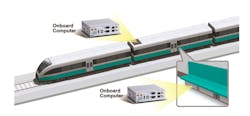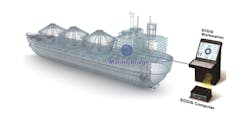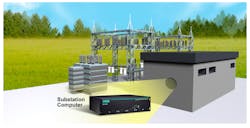Businesses are striving to achieve intelligence at the edge of their industrial networks by deploying computers that can collect, process, and analyze data in unmanned or remote sites. The consequences are dire when these computers have a performance issue or run out of memory, therefore preventing them from performing their role efficiently, if at all.
Industrial processes come to a halt, leading to huge financial losses. If an industrial process malfunctions because of a failure to detect and fix computer issues on time, it could also lead to accidents that result in employee injuries. For these reasons, computers used in IIoT- enabled systems must be treated as critical equipment that require a higher level of maintenance strategy than non-critical devices.
Traditionally, manufacturers have maintained their assets using manual processes that are time-consuming and resource-intensive. The IIoT brings with it a paradigm shift with respect to the operation and maintenance of industrial equipment.
Now, instead of waiting for equipment to fail before fixing it, or scheduling time-based maintenance that sometimes leads to unnecessary maintenance of equipment and downtime, companies are adopting predictive maintenance strategies to stay ahead of the game. These same practices should be applied to industrial computers.
Predictive maintenance tools for a computer can keep track of any variance from expected behavior for key parts, such as CPU usage, CPU temperature, memory usage, and disk usage. Predictive analytics empowers users to explore potential root causes and apply appropriate remedies. By identifying issues early on and allowing repairs to be scheduled in an orderly fashion, predictive maintenance provides lead time to purchase parts for the necessary repairs and reduces the need for maintaining an inventory of key parts.
Hard drives, processors and other damaged parts are replaced before failures occur, and since maintenance work is only performed when needed, production capacity is likely to increase as well.
The goal of any predictive maintenance program is to enable proactive access to data for each piece of critical equipment, enabling the monitoring of its realtime health status, analyzing historical trends, and planning maintenance downtime based on the data.
Predictive maintenance tools for industrial computers monitor its health in order to make repairs well in advance to maximize system uptime. The tools will feature a well-designed dashboard that helps operators keep an eye on key indicators such as CPU loading and memory usage, plus an alarm function to trigger audio or visual alarms and SNMP traps when parameters go over predetermined thresholds.
Additional tool capabilities that aid in predictive maintenance are:
- Easy-to-use remote monitoring functions
- A ready-to-use tool that runs on a Windows or Linux OS
- RESTful APIs that give access to key-part parameters.
Predictive Maintenance in Action
Below we illustrate the importance of predictive maintenance for rail, marine, and power segments using remote-site scenarios.
Railroads
In a metro transit system, computers are widely deployed in onboard control and video recording systems. Because space is limited on refurbished traincars, computing systems are often installed in places that are hard to reach and even more difficult to maintain such as cabinets, compartments under passenger’s seats, or on the ceiling. Having ready access to a computer’s current condition so that you can implement a preventive maintenance routine is an important aspect of ensuring a smooth transit system.
Marine Bridges
An electronic chart display and information system (ECDIS) is one of the most important systems on a ship’s bridge. An ECDIS system takes real-time information from sensors deployed on equipment, including speed logs, radar, wind stations, AIS, and gyrocompasses, into consideration when planning the ship’s voyage. It combines the data from sensors with information on dangerous areas or areas of special attention on the route to chart a safe course for the ship. Therefore, a reliable and durable computer is crucial for running the ECDIS system.
Information on the status of the key parts of the ECDIS computer can be monitored by integrating the computer’s key-part data with the bridge system using monitoring APIs or by another means. In addition, an alert function can help provide warning messages when a parameter associated with a key part goes over a preset threshold. One example is when CPU usage exceeds a threshold due to system software errors. When this happens, an alert message is sent out so that the crew can deal with the problem.
Power Stations
Unmanned power stations are increasingly becoming the norm, and are often located in remote, hard-to-reach sites. A predictive maintenance tool is required to monitor, control and maintain critical equipment, including computers, in an unmanned substation so that it functions smoothly.
Built-in Maintenance Tools
Rugged industrial computers typically feature built-in proactive monitoring solutions that help reduce the costs of remote system maintenance and maximize system uptime. The computer's dashboard may graphically display CPU usage, memory usage, storage partition usage, operating temperature of the CPU and motherboard, and the redundant-power monitor, and trigger relay outputs to provide either visual or audio alarms, or send out SNMP traps. Most of these tools also provide for setting-up the threshold and time period for the key parts to monitor.
Conclusion
The relentless pursuit of excellence in the IIoT world has renewed an interest in predictive maintenance solutions that ensure higher equipment reliability and system uptime. Since computing systems are the pillars of the IIoT, implementing predictive maintenance for them is essential to realizing the full potential of the IIoT.













